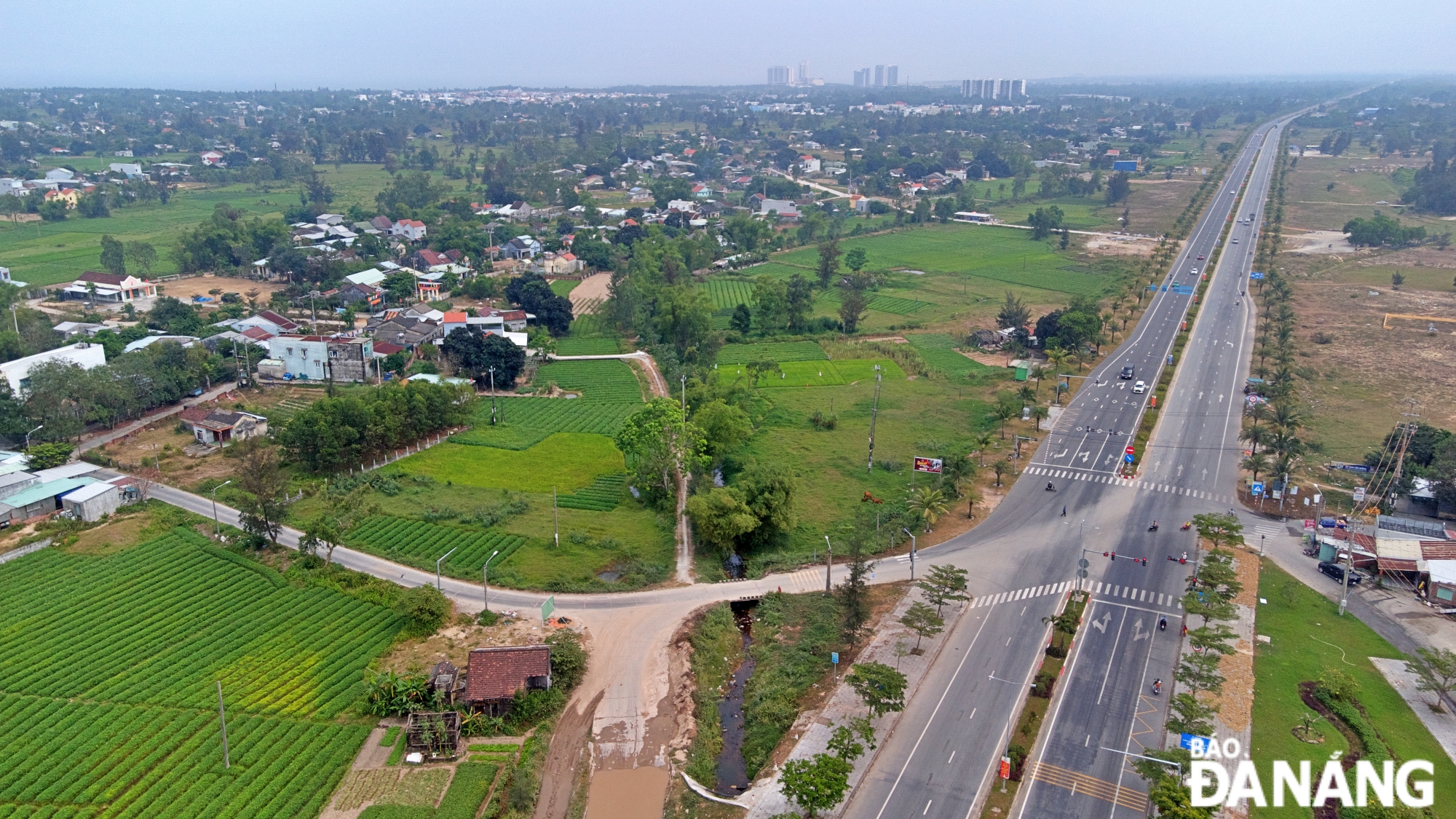Da Nang museums go digital to attract more visitors amid tech boom
The digital transformation is a new step for Da Nang-based museums to become more attractive and closer to the public, especially young people who are interested in learning more about artifacts and data resources. This is also more consistent with the general development trend in the current period of a strongly burgeoning information technology boom. Museums based in Da Nang have been able to ride out several waves of the coronavirus through online exhibitions and exchanging up-to-date information with visitors through smartphones and social networks.
 |
| Tourists are seen admiring exhibits on display at the Da Nang Museum of Fine Arts. Photo: D.H.L |
Convenience for visitors to access artifacts
The Da Nang Museum of Fine Arts, one of the do-not-miss’ tourist attractions in Da Nang, has promoted digital transformation activities. According to Mr. Truong Nguyen Nguyen Kha, the Head of Operations Department of the Da Nang Museum of Fine Arts, more than 450 artifacts on display here have been digitalised via the use of artifact management software integrated with the museum's web.
Since August 2020, four online exhibitions themed ‘Da Nang through the eyes of an artist’, ‘Mid-autumn festival for children’, ‘Sketches of the battlefield’ and ‘Da Nang - My beloved city’ have successfully gone virtual, attracting a large number of locals and visitors, especially children and their parents.
In addition, more than 100 articles and 20 video clips, over the past time, have been posted on websites and social networks, attracting a great deal of attention and interaction of the public, especially young people.
“Although being closed to visitors during the mandatory social distancing mandate, the Da Nang Museum of Fine Arts still regularly received messages from young people asking about the reopening time of this great check-in point in Da Nang”, said Mr. Nguyen Kha.
In a similar vein, the Da Nang Museum of Cham Sculpture has promoted the application of tech apps in bringing material and artifacts closer to viewers, especially during the COVID-19 outbreak.
There is no need to go to museums and buy entrance tickets to see artifacts, now, with just smart phones connected to the Internet, netizens can enjoy exhibits wherever they are. 3D scanning technology has been put into use in the Da Nang Museum of Cham Sculpture since late September 2020 with the aim of bringing up the most authentic experience to visitors amid the burgeoning Industry 4.0. The authentic multi-dimensional virtual experience and 360-degree high-definition pictures satisfy visitors’ visual desire while encouraging them to pay a visit late in reality.
When accessing the website http://scan3d.danangfantasticity.com featuring information on diverse display with the Vietnamese and English languages, both residents and visitors will step into a vivid virtual reality space to explore the Da Nang Museum of Cham Sculpture.
The short, smooth and detailed movements allow users to actively interact directly with the unlimited space and move through the space to any point to feel as if the real-world exhibits are placed there.
Besides, through the existing multi-lingual audio guide, visitors can access audio recordings to gain an insight into the history, origin, place names, and information about the 14 typical exhibits with themes of Hindu and Buddhist gods, fertility symbols, sacred animals and architectural decorations that reveal diverse cultural, religious and aesthetic life of the ancient Champa inhabitants.
Currently, out of more than 2,000 large and small artifacts being kept at the museum, over 80 of which are digitized by Quick Response (QR) codes - square, checkered symbols that can be scanned with smartphones, hereby improve visitor’s ability to quickly and easily pull up extended information about the exhibits just by scanning these codes with their own smartphones. A QR code can hold even more videos, data, pictures, audio or combination of presentation media. This not only creates favourable conditions for tourists but also facilitate teachers and students to perform History classes in a more effective manner.
The QR codes allow users to enjoy the additional presentational information, and the cost effectiveness of implementing QR codes for museum goers is extremely favorable.
Also, since updating digital media is so much easier, swifter and less expensive than re-doing an exhibit, the multimedia content where the museum QR codes are targeted can be more frequently updated.
In addition, apart from facilitating museum goers to access necessary information about historical exhibits in an easer way without much help of the museum guides, the application of QR codes helps to promote the modernisation of museum operation and its international integration in the burgeoning fourth industrial revolution (Industry 4.0), as well as advertise the image of the museum.
Promotion of cultural heritage
The Museum of Da Nang has pioneered in digital transformation. According to the museum’s Director Huynh Dinh Quoc Thien, until now, more than 600 of the 25,000 exhibits on display here have been attached with QR codes. Just using smartphones, visitors can find it easier to access commentaries in Vietnamese, English and French.
Notably Developed by the Heritage Management Department of the Museum of Da Nang, the Da Nang Cultural Heritage Map software at https://bandodisandanang.vn has been operating since 2020 to serve the promotion of cultural heritages in the city on the internet.
By accessing the aforementioned website, users can discover the function of 360-degree virtual tour space with voiceover. At the same time, all information about tourist attractions are presented in the form of images and clips so that viewers can find it easier and convenient to look up what information they need on heritages.
Through the software, locals and visitors can access information about 2 special national-level venues, namely the Dien Hai Citadel and the Marble Mountains Tourist Area, the Hai Van Gate inter-provincial relic site, and 12 national-level and 31 municipal-level sites, and the Ba Na Hills community-based tourist attraction.
In particular, the Dien Hai Citadel, the Marble Mountains Tourist Area and the Hai Van Gate have been represented with 3D images and 360-degree virtual sightseeing space.
Ms. Nguyen Thi Trinh, Deputy Director of the Da Nang Fine Arts Museum affirmed that the unexpected COVID-19 pandemic and related restrictions on cultural institutions and heritage sites induced a significant shift from on-site activities to digital commemoration. The digital transformation is very necessary to meet the development needs of museums to keep up with international trends. Does digitisation not only help them to reach a wide range of audience and promote the value of cultural heritage, but it also increases the interaction between the museum and the public.
Reporting by DOAN HAO LUONG- Translating by A. THU








